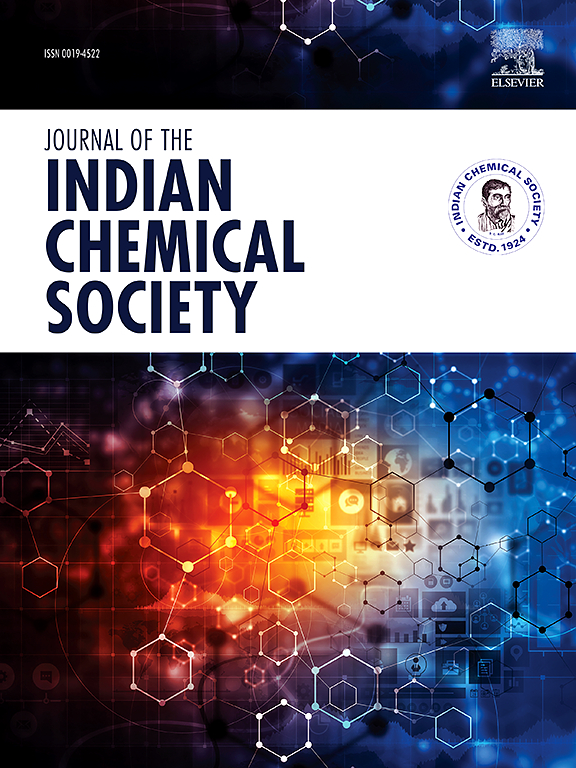Optimizing degradation parameters for enhanced textile industrial pollutant removal with SnO2 nanoparticles: A green approach with antimicrobial and antioxidant efficacy
IF 3.2
4区 化学
Q2 CHEMISTRY, MULTIDISCIPLINARY
引用次数: 0
Abstract
The increasing presence of textile pollutants, pathogens, and free radicals poses significant concerns for the depletion of aquatic resources. This study proposes the use of tin oxide nanoparticles (SnO2 NPs) synthesized using Tectona grandis leaf extract as a sustainable approach to address these pressing environmental issues. To achieve sustainable growth, it is crucial to evaluate the optimal parameters necessary for effectively mitigating toxic pollutants discharged from textile wastewater. This research systematically investigates the influence of catalyst concentration, dye concentration, and pH on the photocatalytic performance of the prepared SnO2 nanoparticles. The optimized parameters resulted in remarkable degradation efficiencies of approximately 98.71 % for Congo Red (CR) dye and 98.01 % for Rhodamine B (RhB). The cyclic stability of the prepared catalyst also demonstrated notable results, with minimal degradation loss of 4.8 % for RhB dye and an extended loss for CR due to pH-related factors. Additionally, antimicrobial testing revealed maximum zones of inhibition of 18 mm and 20 mm against E. coli and S. aureus, respectively, while the nanoparticles exhibited significant antioxidant potential, with an activity of 89.78 %. Overall, this study highlights the physicochemical properties and multifunctional capabilities of SnO2 NPs, showcasing their potential for environmental and clinical applications in alignment with sustainable development goals.

优化氧化锡纳米颗粒增强纺织工业污染物去除的降解参数:一种具有抗菌和抗氧化功效的绿色途径
纺织污染物、病原体和自由基的日益增加对水生资源的枯竭造成了严重的关注。本研究提出利用大构造叶提取物合成氧化锡纳米颗粒(SnO2 NPs)作为解决这些紧迫的环境问题的可持续方法。为了实现可持续发展,评估有效减少纺织废水中有毒污染物排放所需的最佳参数至关重要。本研究系统地考察了催化剂浓度、染料浓度和pH对所制备的SnO2纳米颗粒光催化性能的影响。优化后的参数对刚果红(CR)染料和罗丹明B (RhB)染料的降解效率分别为98.71%和98.01%。所制备的催化剂的循环稳定性也显示出显著的结果,对RhB染料的降解损失最小,为4.8%,而由于ph相关因素,CR的降解损失延长。此外,抗菌测试显示,纳米颗粒对大肠杆菌和金黄色葡萄球菌的最大抑制区分别为18 mm和20 mm,并且具有显著的抗氧化潜力,活性为89.78%。总的来说,本研究强调了SnO2 NPs的物理化学性质和多功能能力,展示了它们在环境和临床应用方面的潜力,与可持续发展目标保持一致。
本文章由计算机程序翻译,如有差异,请以英文原文为准。
求助全文
约1分钟内获得全文
求助全文
来源期刊
CiteScore
3.50
自引率
7.70%
发文量
492
审稿时长
3-8 weeks
期刊介绍:
The Journal of the Indian Chemical Society publishes original, fundamental, theorical, experimental research work of highest quality in all areas of chemistry, biochemistry, medicinal chemistry, electrochemistry, agrochemistry, chemical engineering and technology, food chemistry, environmental chemistry, etc.

 求助内容:
求助内容: 应助结果提醒方式:
应助结果提醒方式:


